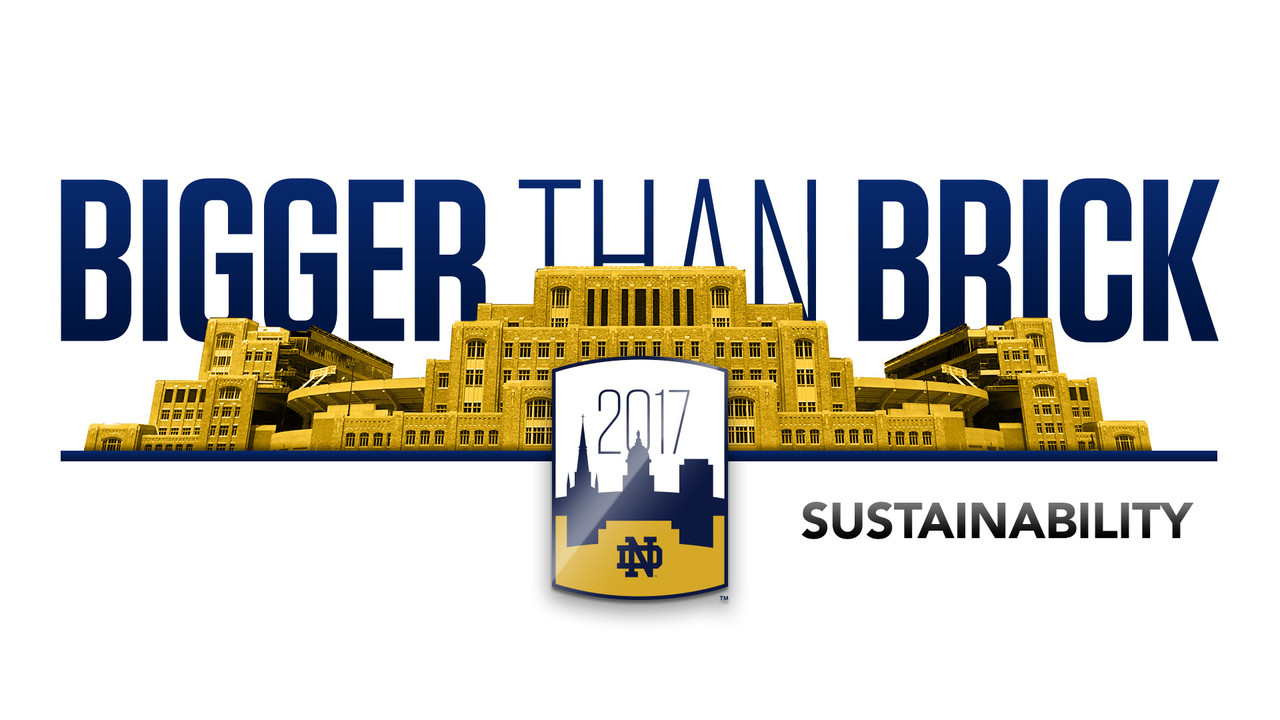Aug. 4, 2017
Although challenging to view based on their locations, the roofs located on top of the Duncan Student Center, Corbett Family Hall and O’Neill Hall-the three new buildings around Notre dame Stadium–are home to the largest vegetative “living” roof system in the state of Indiana.
At close to 43,000 square feet collectively, the installation of the green roof system is another integral element of the University of Notre Dame’s actions to steward and positively impact the natural environment.
☘ New to Notre Dame Stadium!
Green roofs cover all 3 new buildings.
They mitigate storm water run-off & increase energy efficiency. pic.twitter.com/h8TFGWZ4H1
– The Fighting Irish (@FightingIrish) July 28, 2017
A green roof delivers many benefits. Tony Polotto, senior project manager of planning, design and construction at Notre Dame, says, “Green roofs act as a substantial layer of insulation. A typical dark roof can get to a temperature of 150 to 175 degrees on the surface. Alternatively, the additional layer of insulation provided by a green or living roof greatly reduces the roof temperature. This results in the building heating and cooling systems not having to work as hard, providing a more energy-efficient process.”
A second benefit is the diversion of storm water run-off. The major function of a roof is to shed its rainwater immediately, sending that water directly into a storm drain or sewer system, which is an expensive and polluted process. Adds Polotto, “A vegetative roof provides a better way to capture that rainwater, thereby reducing the amount of dirty water being sent to area treatment facilities.”
In addition, green roofs serve to increase the endurance of the roof by acting as protective barriers to the waterproofing membranes below. A vegetative roof easily absorbs the shock of changes in the weather, protecting the material below and increasing the longevity of the roof.
On top of all of these benefits, green roofs are aesthetically pleasing, enhancing the beauty of the Notre Dame campus.
There’s a misperception that green roofs require major investments of time and resources for proper maintenance; in actuality, it is just the opposite. With the right design and plants, living roofs involve very little maintenance. Using sedum and other drought-resistant plantings, weeding and fertilization are kept to a minimum.







